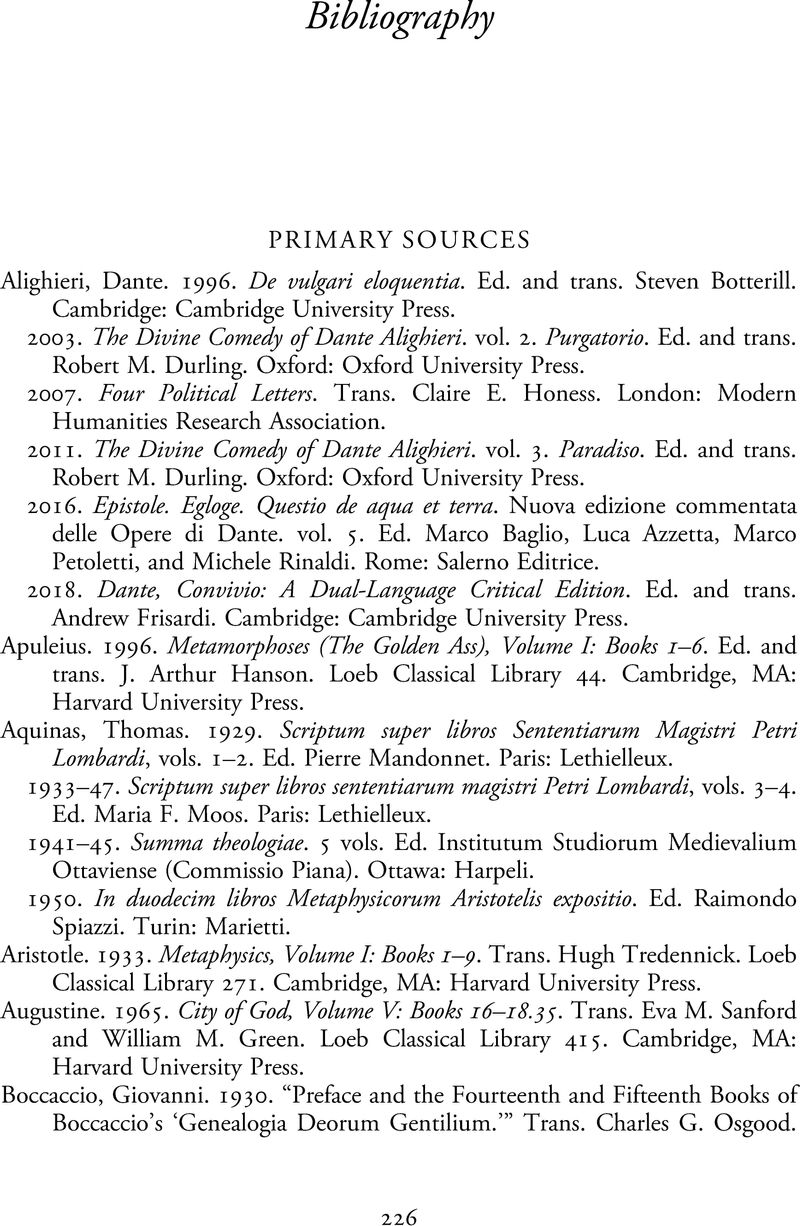Book contents
- The City of Poetry
- Cambridge Studies in Medieval Literature
- The City of Poetry
- Copyright page
- Epigraph
- Contents
- Acknowledgments
- Note on Translations
- Introduction
- Chapter 1 Albertino Mussato, Poet of the City
- Chapter 2 Dante Alighieri, Poet without a City
- Chapter 3 Francesco Petrarch, Poet beyond the City
- Chapter 4 Giovanni Boccaccio, Poet for the City
- Epilogue
- Bibliography
- Index
- Cambridge Studies in Medieval Literature
- References
Bibliography
Published online by Cambridge University Press: 03 December 2020
- The City of Poetry
- Cambridge Studies in Medieval Literature
- The City of Poetry
- Copyright page
- Epigraph
- Contents
- Acknowledgments
- Note on Translations
- Introduction
- Chapter 1 Albertino Mussato, Poet of the City
- Chapter 2 Dante Alighieri, Poet without a City
- Chapter 3 Francesco Petrarch, Poet beyond the City
- Chapter 4 Giovanni Boccaccio, Poet for the City
- Epilogue
- Bibliography
- Index
- Cambridge Studies in Medieval Literature
- References
Summary

- Type
- Chapter
- Information
- The City of PoetryImagining the Civic Role of the Poet in Fourteenth-Century Italy, pp. 226 - 252Publisher: Cambridge University PressPrint publication year: 2020

